Cubic Polynomial
A cubic polynomial is a polynomial of degree 3. It is in the form:
\[ax^3 + bx^2 + cx + d\]
where \(a\), \(b\), \(c\), and \(d\) are constants, and \(a \neq 0\).
Key Concepts:
- Degree: The degree of a cubic polynomial is 3, which means the highest power of the variable (in this case, \(x\)) is 3.
- Leading Coefficient: The leading coefficient is the coefficient of the term with the highest power of the variable. In a cubic polynomial, the leading coefficient is \(a\).
- Roots/Zeros: The roots or zeros of a cubic polynomial are the values of \(x\) for which the polynomial equals zero. A cubic polynomial can have up to 3 real or complex roots.
- Graph: The graph of a cubic polynomial is a curve that may have up to 2 turning points (local maxima or minima).
Study Guide:
- Understand the general form of a cubic polynomial: \(ax^3 + bx^2 + cx + d\).
- Learn to identify the degree and leading coefficient of a cubic polynomial.
- Practice finding the roots/zeros of a cubic polynomial by solving the equation \(ax^3 + bx^2 + cx + d = 0\).
- Study the behavior and key characteristics of the graph of a cubic polynomial, including turning points and end behavior.
- Work on problems involving applications of cubic polynomials, such as volume calculations and optimization.
Example:
Consider the cubic polynomial \(2x^3 - 3x^2 + 4x - 5\). Here, the degree of the polynomial is 3, and the leading coefficient is 2. The roots of the polynomial can be found by solving the equation \(2x^3 - 3x^2 + 4x - 5 = 0\). The graph of this polynomial will exhibit the characteristic shape of a cubic curve with up to 2 turning points.
Hope this guide helps you understand the concept of cubic polynomials better! Good luck with your studies!
.◂Math Worksheets and Study Guides Seventh Grade. Nonlinear Functions and Set Theory
Study Guide Nonlinear Functions and Set Theory
Nonlinear Functions and Set Theory  Worksheet/Answer key
Worksheet/Answer key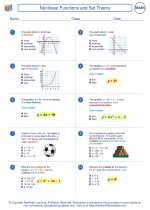 Nonlinear Functions and Set Theory
Nonlinear Functions and Set Theory  Worksheet/Answer key
Worksheet/Answer key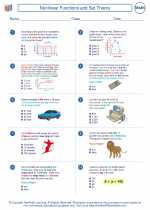 Nonlinear Functions and Set Theory
Nonlinear Functions and Set Theory  Worksheet/Answer key
Worksheet/Answer key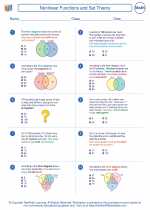 Nonlinear Functions and Set Theory
Nonlinear Functions and Set Theory  Worksheet/Answer key
Worksheet/Answer key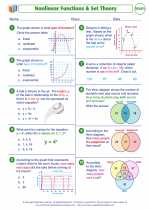 Nonlinear Functions and Set Theory
Nonlinear Functions and Set Theory  Worksheet/Answer key
Worksheet/Answer key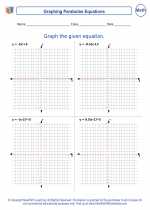 Parabolas
Parabolas 

 Worksheet/Answer key
Worksheet/Answer key
 Worksheet/Answer key
Worksheet/Answer key
 Worksheet/Answer key
Worksheet/Answer key
 Worksheet/Answer key
Worksheet/Answer key
 Worksheet/Answer key
Worksheet/Answer key

The resources above cover the following skills:
Algebra (NCTM)
Represent and analyze mathematical situations and structures using algebraic symbols.
Explore relationships between symbolic expressions and graphs of lines, paying particular attention to the meaning of intercept and slope.
Analyze change in various contexts.
Use graphs to analyze the nature of changes in quantities in linear relationships.